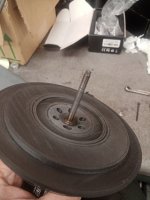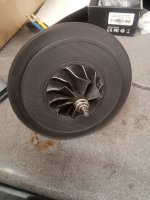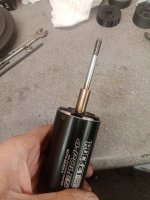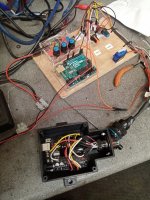First stage is completed of my twincharger. This will only be used upto around 2700rpm before the main turbo spools properly. The engine is a small displacement 4cyl so the power required is low as I only require about 0.25bar.
The motor is a 4074 running @ 24V. Compressor is off a GT2056 .
I chose to use a 3D printed backplate (Nylon with 25% carbon fibre) with a PEEK front bearing with 50mics radial clearance. It is bolted to the motor with steel compression limiters.
The motor extension shaft is interference fit only with 20microns as this should be sufficient.
So far it has worked faultlessly and does produce around 0.25bar at the required flow.
Next is to fit to the car, get it running and sort the throttle position/speed to engage and disengage the supercharger.
We will have to see if a bypass is required or maybe just increase the boost slightly to compensate for the inlet depression from the supercharger.
The motor is a 4074 running @ 24V. Compressor is off a GT2056 .
I chose to use a 3D printed backplate (Nylon with 25% carbon fibre) with a PEEK front bearing with 50mics radial clearance. It is bolted to the motor with steel compression limiters.
The motor extension shaft is interference fit only with 20microns as this should be sufficient.
So far it has worked faultlessly and does produce around 0.25bar at the required flow.
Next is to fit to the car, get it running and sort the throttle position/speed to engage and disengage the supercharger.
We will have to see if a bypass is required or maybe just increase the boost slightly to compensate for the inlet depression from the supercharger.





